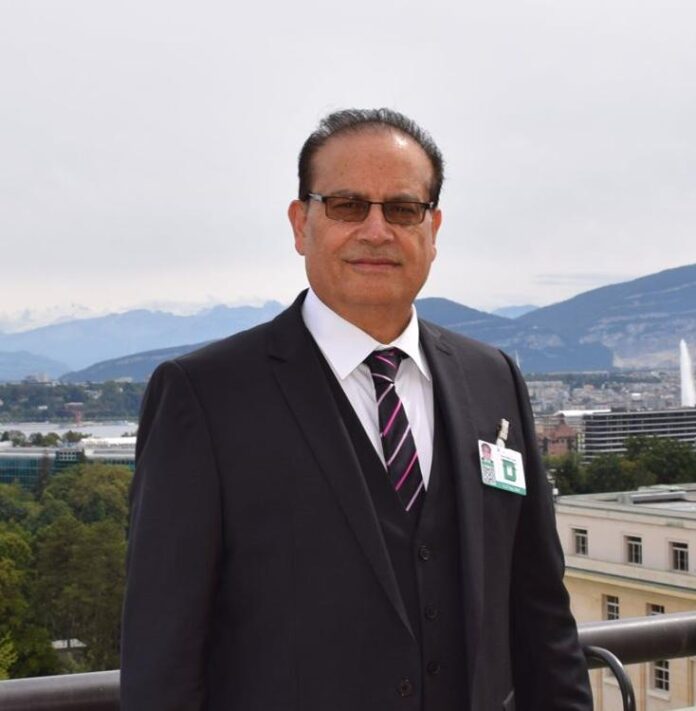By Qamar Bashir
Since the beginning of his presidential campaign, Donald Trump repeatedly declared that he alone could stop the Russia-Ukraine war “within 24 hours.” He spoke with confidence, even certainty, that his personal rapport with President Vladimir Putin, combined with his ability to “make deals,” would secure a swift end to Europe’s bloodiest conflict since World War II. Trump openly expressed frustration, dismay, and even embarrassment over the continuation of the war and insisted that had he been in office earlier, he would have prevented the escalation altogether. Throughout 2024, he reminded Americans that he had stopped wars before, pressuring Pakistan and India, Sudan, Cambodia, and even the Congo into ceasefires by using the leverage of U.S. influence, IMF support, World Bank loans, military cooperation, and trade access. These were smaller nations with limited military capability, fragile institutions, and deep dependence on Western goodwill. In those cases, American pressure worked because the countries lacked the strength to resist.
But Ukraine and Russia were not Congo or Cambodia. They were not dependent battleground states that Washington could pressure into compliance. Ukraine, despite its limitations, had the unwavering support of the United States, the European Union, the U.K., Canada, Japan, and NATO. And Russia was not a minor player—it remained a nuclear superpower with the world’s fifth-largest military, a vast industrial base, and deep historical, cultural, and security ties to Ukraine. Trump discovered upon taking office that this war was not within his unilateral control. It was a conflict shaped by entrenched interests, strategic insecurities, clashing national identities, and the geopolitical rivalry between Russia and the West.
At the same time, the Middle East war presented a different strategic landscape. Trump used every tactic—pressure, incentives, sanctions, diplomacy—to check Israel’s actions, expose its vulnerabilities, and bring forward facts the world had previously ignored. He openly criticized Netanyahu’s government and highlighted how Israel’s operations in Gaza and the West Bank were eroding its global legitimacy. The brutal images emerging from Gaza—the starvation, bombing of civilian areas, and displacement of millions—forced a global reckoning. Trump’s intervention, his threats, and his diplomatic maneuvers produced results that many had considered impossible: halting Israel’s ambitions to absorb the West Bank, blocking the total annexation of Gaza, and revealing the scale of Israel’s military and political overreach. In this sense, Trump achieved in Israel-Hamas what he could not achieve in Ukraine: he forced restraint on a U.S. ally by exposing its excesses.
But Ukraine was fundamentally different, and this difference ultimately defeated Trump’s early optimism. Russia was not reliant on American aid. Its economy, though strained by sanctions, continued to function through energy exports to China, India, and dozens of African and Latin American states. Militarily, Russia absorbed heavy losses yet maintained industrial capacity far greater than Ukraine’s. It possessed nuclear leverage and geopolitical depth. For Russia, Ukraine was not a distant battleground—it was the core of its security doctrine, a red line stretching back centuries. Putin made it clear repeatedly that he would not withdraw without guarantees: a neutral Ukraine, a legally binding prohibition on NATO membership, recognition of Crimea as Russian, acceptance of Russian control over parts of Donbas, and limits on Ukraine’s military size. These were not requests—they were conditions.
Trump’s draft peace plan, a 28-point proposal circulated quietly among Western allies, reflected this new reality. The plan barred Ukraine from joining NATO permanently, capped its military at roughly 600,000 troops, froze frontlines in Kherson and Zaporizhzhia, accepted Russian control over Crimea and parts of Donetsk and Luhansk, and prohibited NATO bases in Ukraine. In exchange, the United States offered security guarantees, economic assistance, and a reconstruction fund estimated between $100–200 billion. Russia would receive sanctions relief and the possibility of rejoining the G8, provided it adhered to the agreement.
To Moscow, the plan offered almost everything it had demanded. To Kyiv, it was tantamount to national surrender.
President Volodymyr Zelensky rejected the proposal immediately, declaring that Ukraine would “never trade sovereignty for temporary peace” and that no Ukrainian leader had the moral authority to cede legally recognized territory. His security chief called the plan “unacceptable, humiliating, and dangerous.” European nations also rejected the deal. Their strategic objective remained unchanged: keep Ukraine armed, keep Russia contained, and maintain a buffer zone between Moscow and the heart of Europe. Many in the EU believed that Russia had to be weakened militarily so it could not threaten Eastern Europe again. Whether this goal was realistic or not, Europe’s stance meant Trump could not pressure Ukraine the way he had pressured smaller states in the past.
China, for its part, observed quietly but carefully. Beijing’s position has long been consistent: territorial integrity matters, nuclear escalation must be avoided, and stability in Eastern Europe is necessary for Chinese economic corridors and long-term plans. China did not openly endorse Trump’s plan, but it viewed parts of it—especially neutrality for Ukraine—as aligned with its own position. Yet China also understood that a forced peace lacking Ukrainian consent would collapse, creating long-term instability detrimental to global markets and Chinese strategic interests. China thus indirectly pushed for a negotiated settlement, not an imposed one.
The truth is that no peace plan can succeed without three elements: the willingness of Ukraine to accept painful compromises, the willingness of Russia to halt further ambitions, and the willingness of Europe and the United States to accept a rebalanced security order in Eastern Europe. Trump’s plan offered a blueprint but lacked political acceptance from the actors who mattered most. That is why, despite months of intense diplomatic activity, despite pressure, promises, warnings, and deadlines, the war continued into November with no sign of a ceasefire.
But despite the disappointments, one conclusion remains unavoidable: the longer this war continues, the greater the disaster for all parties involved. Ukraine loses thousands of lives, millions of citizens, and the foundations of its economy. Russia remains trapped in sanctions, global isolation, and perpetual confrontation. Europe pays the price through energy shocks, military spending, and strategic vulnerability. The United States drains its treasury while gaining no guarantee of long-term security benefits. China watches with concern as global markets fluctuate and instability spreads across Eurasia.
Peace—even an imperfect peace—will pay dividends for all. War guarantees only destruction. A negotiated settlement, no matter how difficult, is the only path that prevents decades of further bleeding. For Ukraine to rebuild, for Russia to rejoin the world, for Europe to regain stability, and for the international community to escape the shadow of escalation, diplomacy must prevail. The alternative is perpetual conflict—a burden the world cannot afford.
By Qamar Bashir
Press Secretary to the President (Rtd)
Former Press Minister, Embassy of Pakistan to France
Former Press Attaché to Malaysia
Former MD, SRBC | Macomb, Michigan, USA

















